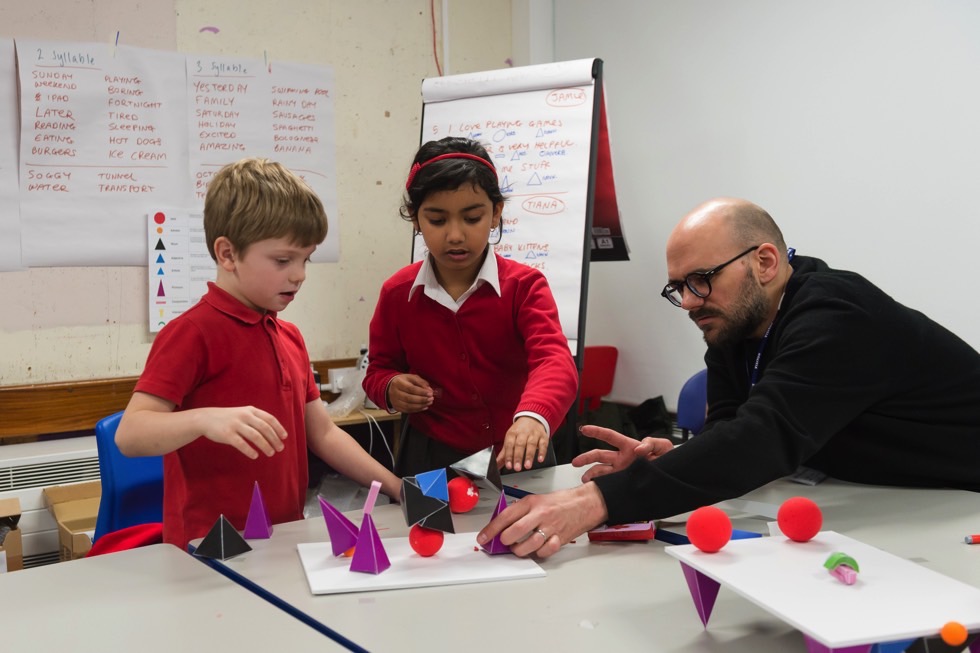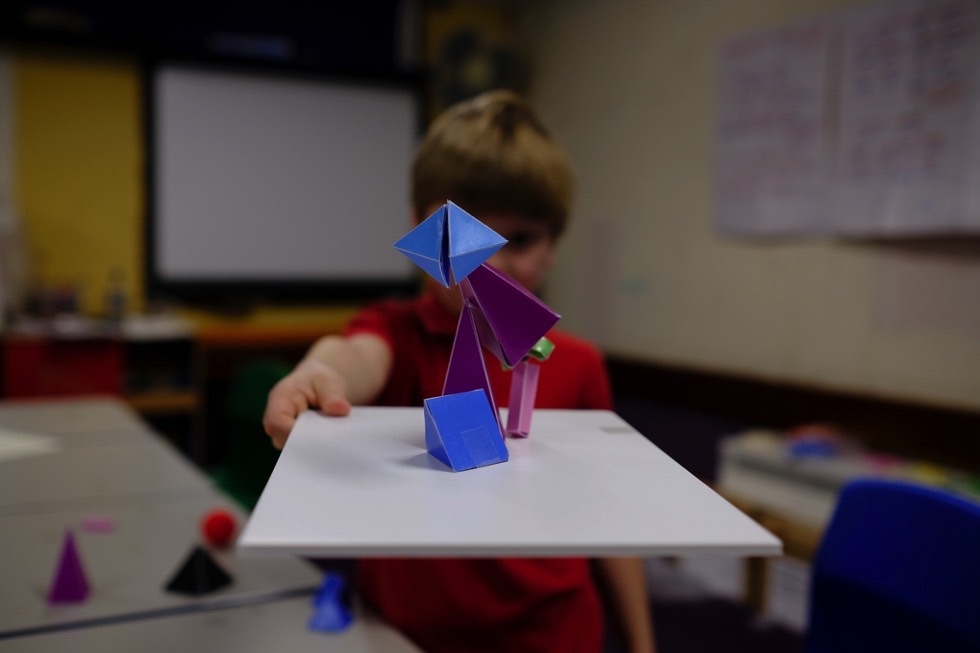“A bonkers method of teaching”: Ryan Gander Goes Back To School For Liverpool Biennial 2018

For the upcoming Liverpool festival of contemporary art, Ryan Gander has been collaborating with kids from Knotty Ash Primary School. And they’ve been teaching him a thing or two about imagination in the process, finds Emily Speed…
As I head inside to meet with Ryan Gander at Knotty Ash Primary School, I find him in the corridor surrounded by a captivated team of staff from the school newspaper, who are conducting their own interview. “What’s your favourite colour?” one child asks. Blue is the reply, followed by a pause, and then a detailed explanation about how blue is the colour of the sky and therefore endlessness. The children nod seriously and I have an inkling that Gander’s special brand of complex simplicity is something to which children respond well.
Gander, who is originally from nearby Chester, is here to produce Time Moves Quickly, a new commission for Liverpool Biennial 2018. It is described as a collaborative work with five children from Knotty Ash Primary school: Jamie Clark, Phoebe Edwards, Tianna Mehta, Maisie Williams and Joshua Yates. During this year’s Biennial festival, Gander will exhibit a series of bench-like sculptures in the grounds of the Liverpool Metropolitan Cathedral, artworks that will be part of a group show at the Bluecoat, and a film documenting the whole process. He doesn’t know exactly what it will all look like yet, but what he does tell me is that it is inspired by Montessori methodology: or in layman’s terms, hands-on learning. The work has involved a series of exercises in order for the children to create and design 3D forms; for example, throwing multicoloured Cuisenaire Rods, blindfolded, to create abstract compositions.
“The work is to read what this bonkers-ness is”, Gander says. “In everything that is illogical and abstract, there is another logic after that, that you can pull from it.”
Gander describes how he has then taken on the same task as he has set the children. “The film we’ve been making the last few days is me turning the tables and applying the same principles as I set for them, on myself. Seeing if I could do it.” As he outlines the rules and framework he has put in place for the children, I begin to suspect that he is very much the chief collaborator in the process.
The school has a lovely atmosphere and I can see how excited the young people are to have Gander around. He seems genuinely happy to be there too and has clearly built up a rapport. ‘The school have been amazing”, he says; “they’ve let us do whatever we want. They’ve completely had faith in what we’re doing and we wouldn’t have been able to do it without that freedom.
“What I really respect is they know so much about teaching, but they’re completely open to us doing this completely ad hoc, weird, illogical abstract, bonkers method of teaching.”

Throughout our meeting, Gander tells anecdotes about the children, including being told a story devised after they saw his own Set In Stone typeface, and the astonishing ability of the children to think not only through time and space, but also fiction and parallel worlds. I ask Gander what he thinks the long term impact of Time Moves Quickly might be for them. Unexpectedly, he isn’t at all keen that they go into the arts themselves, saying there are already too many people at art school. Better, he states, that art schools have “creative fire-fighters or creative car-mechanics” as their alumni. “The best bits of working with these kids”, he continues, “is when I see in their faces the realisation that anything is possible. That is amazing, seeing that.”
Despite having worked with his daughter many times, this is the first time Gander has worked with Primary school children in an educational setting. Although it’s probably too early to tell, I ask the same of him: what does he think the impact of working with these young people will be?
“It’s challenging working with the kids, because you can’t apply the same strategies to all of them – they are all different, different humans, good at different things and working in different ways. They are all surprising. It reminds me to change perspective as often as possible.”
Another legacy of the project is going to be a digital resource, so that other educators can use the methodology themselves. Polly Brannan, Education Curator at Liverpool Biennial, talks animatedly about how valuable that part of the work is. “Ryan’s looking at materials that they might usually use for counting and using them for art, so you have all the teachers coming in, who haven’t been very confident in art, saying how they really want to use it in their own class… From Ryan’s project, we have a whole curriculum around Maths… Not just art.”
Gander describes to me the affordable, editioned set of wooden building blocks, which will hopefully be another outcome for the project (get behind me and my son in the queue, please) and how these could potentially have the most reach.
“Benches are good, benches are a fantastic thing to do, but things carry on from the building blocks. It gives people the ability to shift perspective and have empathy, to see things from different viewpoints, to understand micro/micro but not just in scale, in time, in relationships, everything.
“To have an overview of everything and that is what the world needs really right now. It seems like an insignificant thing, but it’s actually a massive thing. When you see a building you can – if you daydream enough – you can dissect it in to a load of pieces and reassemble them in your imagination, to make anything. Your imagination is so powerful.”
Emily Speed
See Time Moves Quickly at the Bluecoat and at Liverpool Metropolitan Cathedral during Liverpool Biennial 2018: Beautiful world, where are you? from 14 July – 28 October 2018 — FREE
See Emily Speed’s redesign of Bootle Library, as part of the Possibilities Club, from 2-4.30pm, Monday 18 June 2018 (FREE, drop in) — with participating school children doing part of the unveiling. Refreshments provided
Ryan Gander, Time Moves Quickly, workshop 2018. Top image courtesy Brian Roberts, middle image courtesy Ryan Gander





